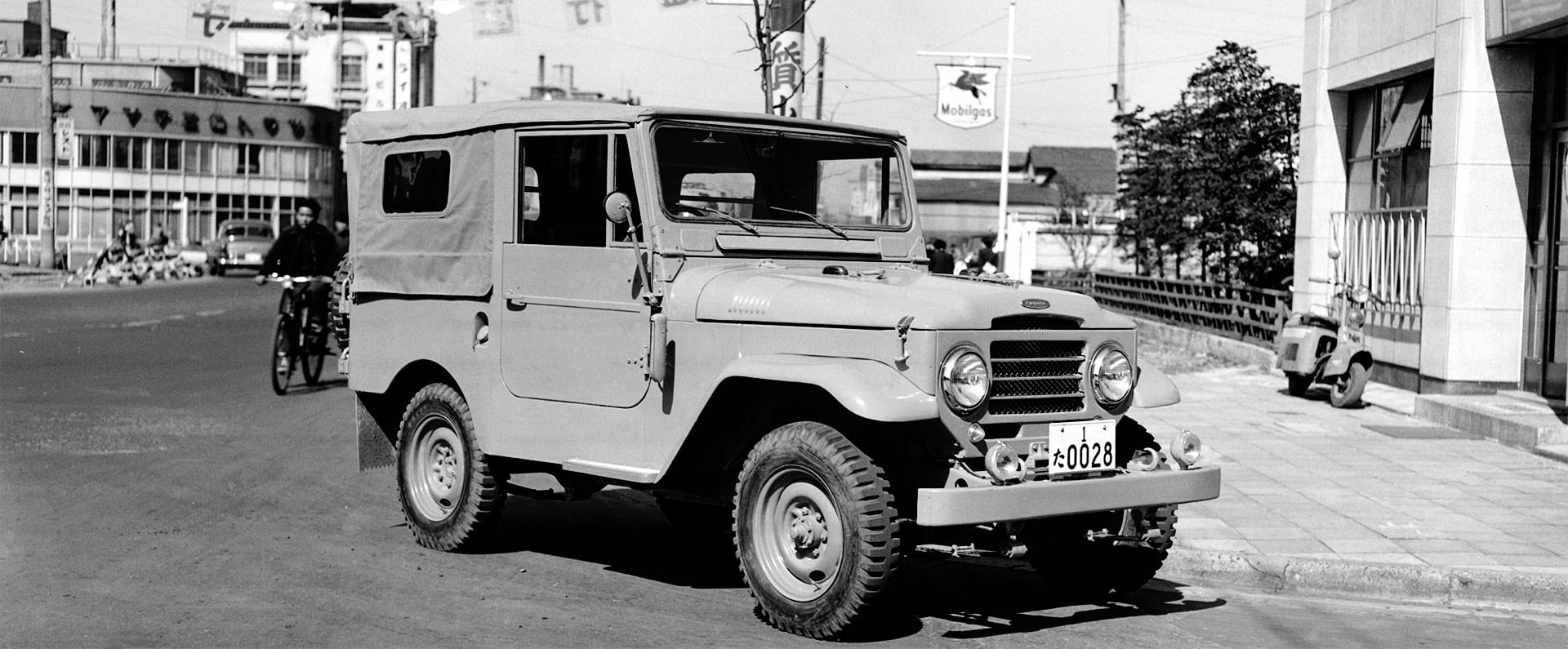1951
Land Cruiser BJ series
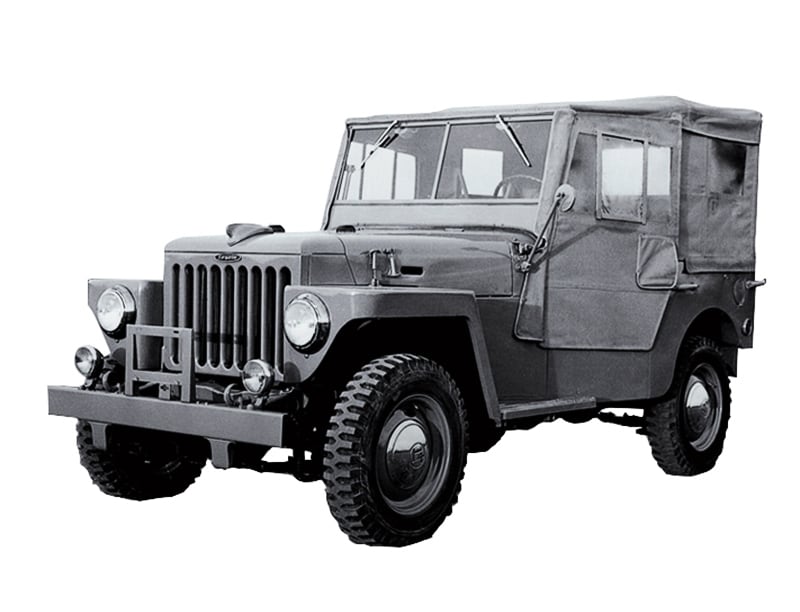
The Toyota Jeep BJ was originally developed for use by the National Police Reserve (today's Japan Ground Self-Defense Force) in 1951. The chassis of the Model SB small truck was modified for a 4-wheel-drive vehicle, and was fitted with a 3,400 cc 6-cylinder Type B gasoline engine that had powered the Model AA and AC passenger cars.
Although the Toyota Jeep BJ's large-displacement engine assured its superiority performance, the National Police Reserve ended up choosing the Mitsubishi Jeep (a licensed production version of the North American Willys Jeep) because the latter had a more extensive track record. Accordingly, the Toyota Jeep was converted for civilian use and went into volume production in 1953.
As the Jeep name was a trade mark of Willys-Overland Motors, Toyota changed the vehicle name to the Land Cruiser in June 1954.
1955
Land Cruiser 20 series
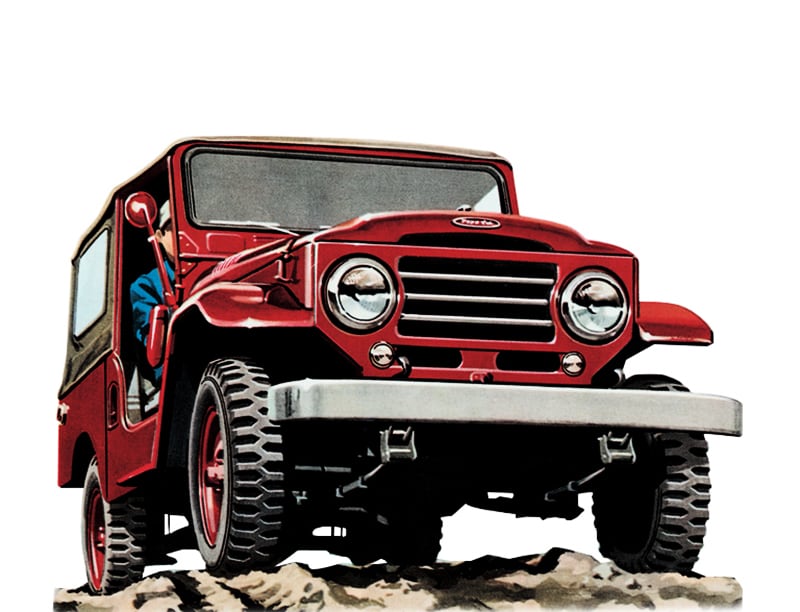
The second-generation Land Cruiser, the so-called 20 Series, was released in November 1955, with the external appearance suitably redesigned for civilian use.
To satisfy wide-ranging needs, two chassis were initially made available with a wheelbase of 2,285 mm and 2,430 mm, respectively, to which a 2,650 mm wheelbase chassis was added at the end of the model life in 1959. Two inline 6-cylinder gasoline engines were available, including a 3.4-liter unit (Type B) that was inherited from the first-generation model and a 3.9-liter unit (Type F) that was used on a fire engine version toward the end of the first model generation. In mid-1956, the engine lineup was consolidated to the Type F unit alone. A 4-wheel-drive model (with a 1-speed transfer case) and a rear-wheel-drive model (for police patrol duties) were also introduced. The body variations included a soft-top, a pickup, 2- and 4-door vans, and a fire engine, among others.
With the second-generation model, the Land Cruiser began to be exported to North America and other overseas markets in large volume.
1960
Land Cruiser 40 series

The third-generation Land Cruiser, commonly known as the 40 Series, was placed on the market in August 1960. The vehicle won high acclaim as a reliable cross-country vehicle, making the Land Cruiser brand renowned across the globe.
The chassis was the same as the one used for the second-generation model, available with a short (2,285 mm), medium (2,430 mm), or long (2,650 mm) wheelbase. A 2,950 mm wheelbase chassis was also added in 1963, dedicated for pickups and cab & chassis trucks for export.
Basic body variations were similar to those of the second-generation model, including a soft-top, 2- and 4-door vans, a pickup, and a fire engine. In July 1967, the 4-door van was replaced with a newly introduced station wagon with a dedicated body (FJ55). A 3.6-liter 6-cylinder diesel power unit (Type H) was added to the engine lineup in 1973, followed by a 3-liter 4-cylinder diesel (Type B) in 1974. As the diesel versions were classified in the "4 number" (small truck) category which offered financial advantages to individual owners, these power units became the engines of choice for the Land Cruiser. A 3-speed manual transmission with a column shifter and a dashboard-controlled 2-speed transfer case was adopted, enabling the front row seats to accommodate three people.
The third-generation model was cherished for as many as 24 years throughout the world, becoming known for its nickname "40 (forty)."
1984
Land Cruiser 70 series
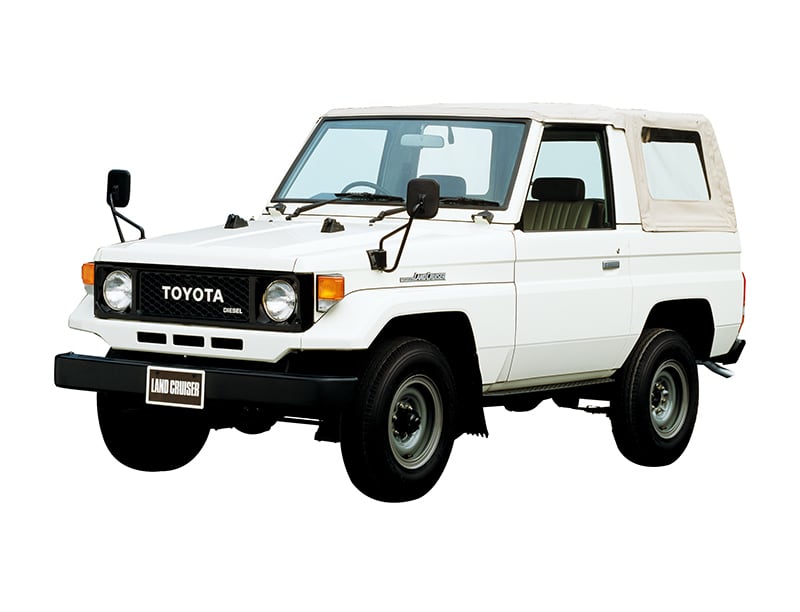
In November 1984, the Land Cruiser 70 Series was launched as the successor to the 40 Series. As 4-wheel-drive vehicles were becoming increasingly popular for transporting passengers as well as for their original use as commercial vehicles, the Land Cruiser renewed the external styling and improved its ride comfort, drivability, and ease of use to satisfy new demand. The new styling retained the overall image of the 40 Series, while adopting a curved glass for the windshield. The cabin became more spacious, and the utility was also enhanced. An FRP-top model was added to the body variations which included a soft-top and vans. Five wheelbases ranging from 2,310 mm to 3,180 mm were offered to answer a wide range of needs, and a chassis for mounting a custom-designed coachwork was also made available.
In 1999, the leaf springs of the rigid axle front suspension were replaced with coil springs to improve ride comfort. The engine lineup included 4-, 5-, and 6-cylinder units for both gasoline-powered and diesel models, and a 4.5-liter V8 diesel unit was also made available for export models.
2007
Land Cruiser 70 series
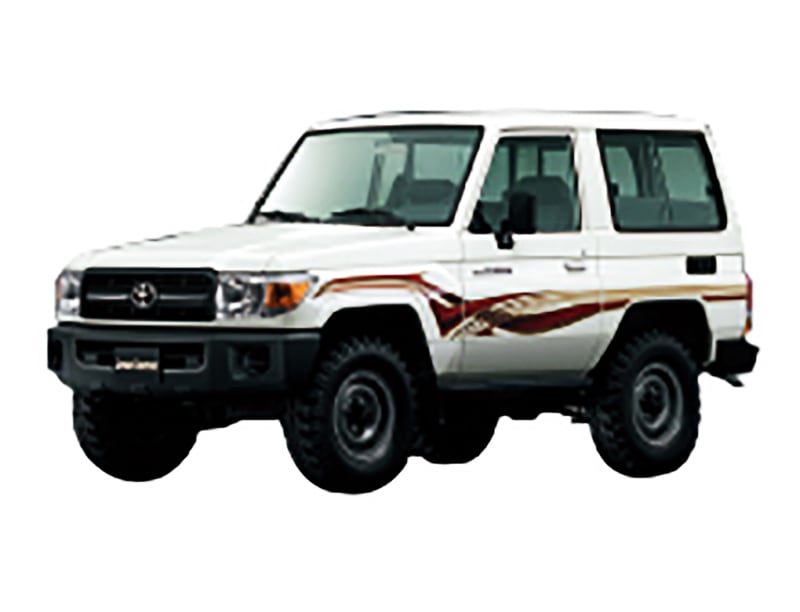
Sales of the Land Cruiser 70 Series concluded in Japan in 2004. Overseas, however, the car's drivability and reliability in harsh usage environments remained highly regarded and, as such, the 70 Series continued to be produced as an overseas-only model.
For the first time since its launch, the 70 Series was accompanied by a significant overhaul in the design of the Land Cruiser; the independent fenders that had been introduced with the 40 Series were eliminated, resulting in a completely new, modern frontal appearance. In order to house the new V8 turbo diesel engine, the front of the car was widened by 80 millimeters and the front of the engine room by 230 millimeters. The 70 Series, therefore, possessed a powerful, imposing presence when viewed from the front. Neither the dimensions nor the design of the body from the A pillars backward were altered.
The 76 Series―with a four-door semi-long wheelbase―was added to the line-up, while the 73 Series―with its two-door, medium wheelbase―was discontinued.
In August 2012, a double cab pick-up model was added to the 70 Series line-up for the first time.
2014
Land Cruiser 70 series
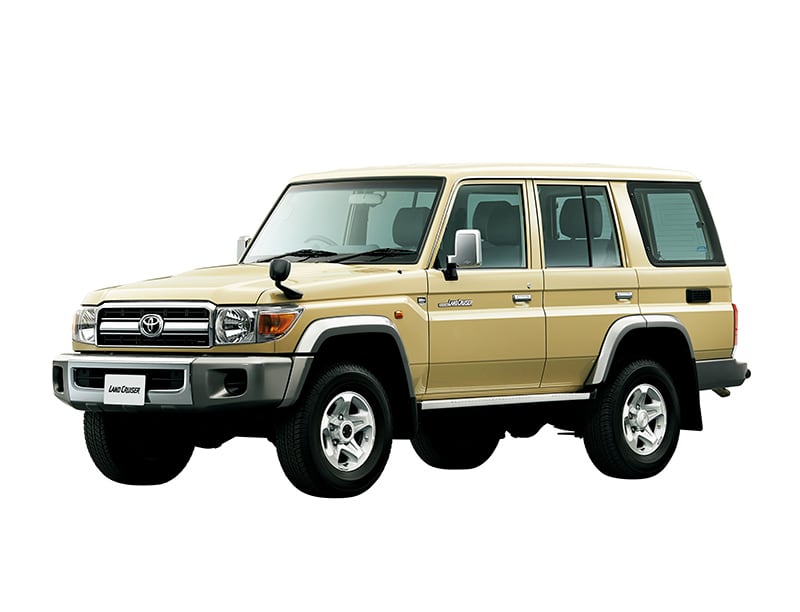
The Land Cruiser 70, first launched in Japan in 1984, has heavy duty specifications adapted for off-road driving. In addition to the four-door van model previously available, for the first time in Japan, in 2014, a double-cab pickup truck was added to the lineup.
The Land Cruiser 70's ladder-frame construction gives it its legendary robustness and durability. These features are combined with a V6 4.0-liter engine and part-time four-wheel drive to reproduce the Land Cruiser's classic features, including its excellent drivability. The vehicle incorporates modern interior and exterior design elements and safety features to meet today's needs.


